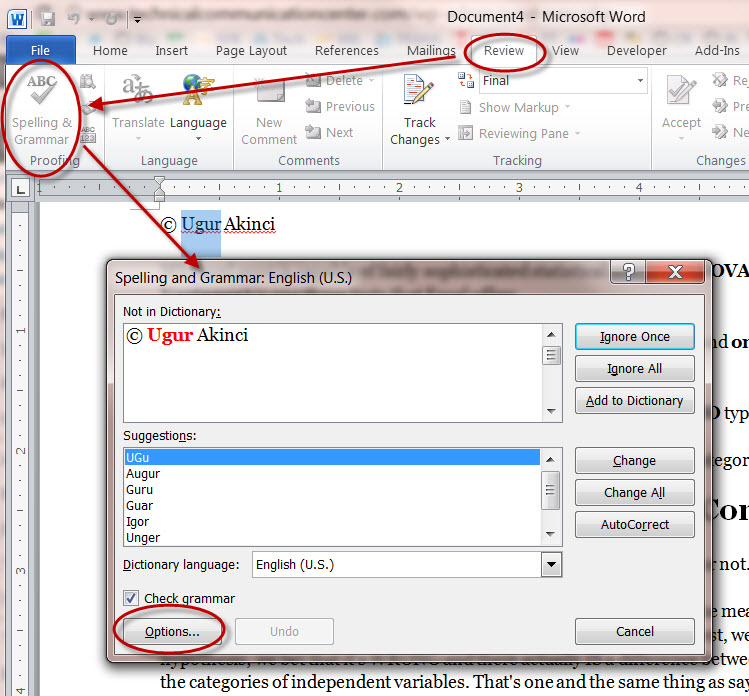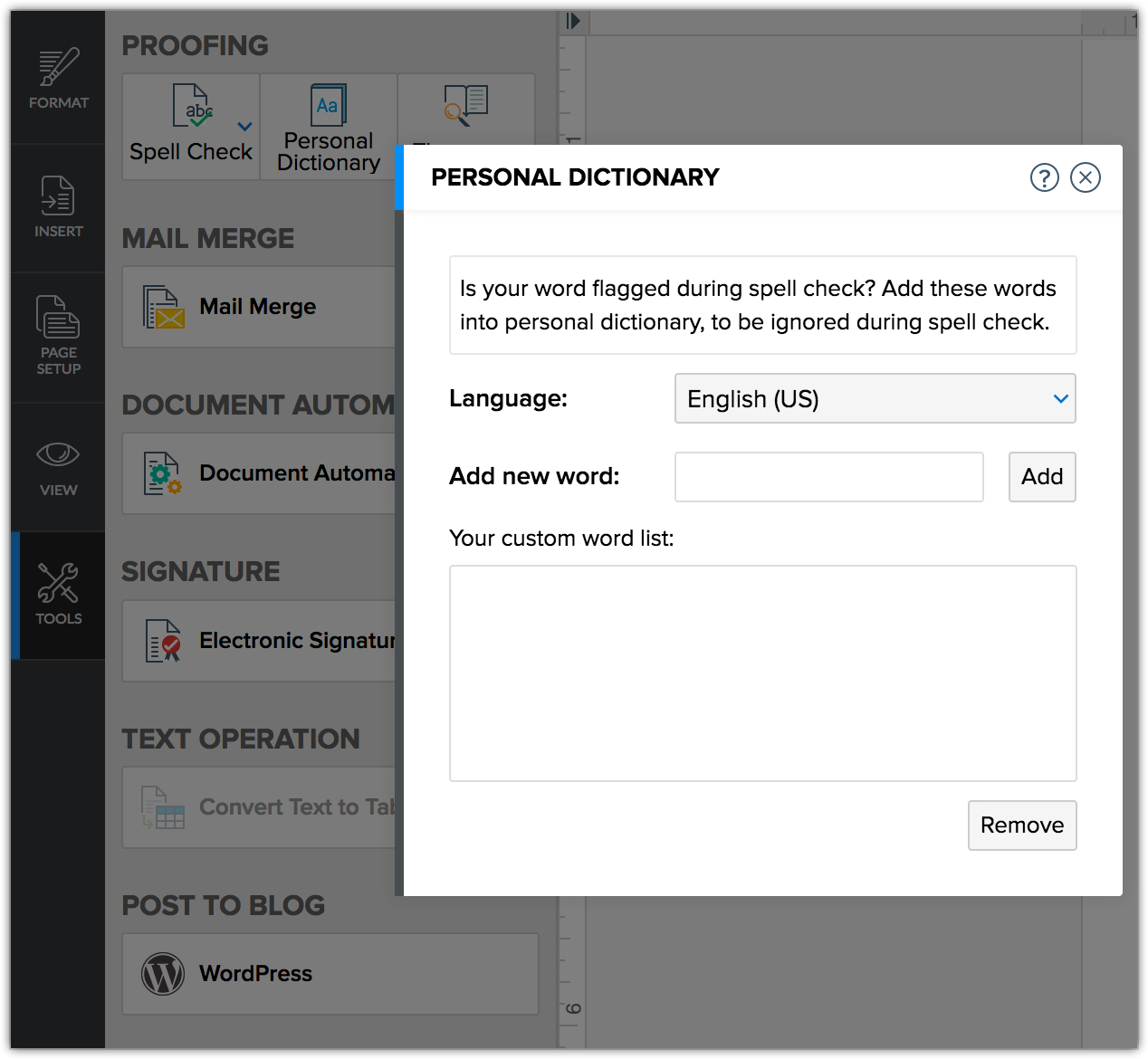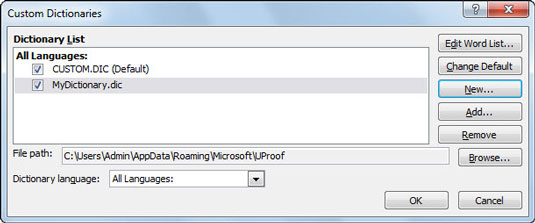


- #WHERE IS CUSTOM DICTIONARY IN WORD 2016 HOW TO#
- #WHERE IS CUSTOM DICTIONARY IN WORD 2016 MAC OS X#
- #WHERE IS CUSTOM DICTIONARY IN WORD 2016 MAC#
- #WHERE IS CUSTOM DICTIONARY IN WORD 2016 WINDOWS#
The user name might not match the actual folder name, and Windows could be installed in a different drive. You can copy this file over to your new installation. When you add a word to the dictionary in Word 2010, it appears in a text file here:Ĭ:\Users\%username%\AppData\Roaming\Microsoft\UProof\CUSTOM.DIC SuperUser contributors mkruzil and and31415 have the answer for us. Saving the list is definitely better than starting from zero again, so is there an easy way to find and save it? The Answer I am looking for a way to save my custom list so that I can easily add it back in to Office after re-installing Windows. After I re-install Windows, the custom list of words I built up in Office will be gone. I use Microsoft Office Proofing Tools, but have run into a problem now that I have to re-install Windows.
#WHERE IS CUSTOM DICTIONARY IN WORD 2016 HOW TO#
Luckily, if an application uses its own built-in dictionary–like Microsoft’s Office applications do–that application should have built-in options for managing its dictionary in its Preferences screen.SuperUser reader Shaqpad wants to know how to find and save the list of custom dictionary words in Microsoft Office:
#WHERE IS CUSTOM DICTIONARY IN WORD 2016 MAC#
When you’re done, click the “File” menu and select “Save.” You can then close TextEdit.Īgain, this will only work with apps that use the system-wide spell check dictionary, which most Mac applications use. Ensure any words left in the file appear on their own lines. You can delete the entire list to clear your entire dictionary, or delete specific words to remove them.

To remove words from your dictionary, just delete them from the list here. If you’ve never added any custom words to your local dictionary, you’ll just see an empty file. Open it in TextEdit by Ctrl-clicking or right-clicking it, pointing to “Open With,” and selecting “TextEdit.” You’ll see a “LocalDictionary” file here. This will take you to the /Users/USERNAME/Library/Spelling folder. Click the “Go” menu and select “Go to Folder.”Įnter the following address and click the “Go” button: ~/Library/Spelling It’s located under the normally hidden Library folder, and is different for each user. However, this information is stored in a text file you can easily edit yourself.įirst, you’ll need to find this file.
#WHERE IS CUSTOM DICTIONARY IN WORD 2016 MAC OS X#
Unfortunately, Mac OS X doesn’t provide a preferences pane for managing your custom dictionary. I have been unlucky in finding the solution so far on the internet, hoping someone will be able to help me here. however after restarting the app or computer it reverts back to English (US). Or, you may have accidentally added words in the past and don’t remember all of them. The default dictionary in Office 365 is defaulting to English (US), we need this change to English (Aus). Let’s say you accidentally added one or more misspelled words and you aren’t sure exactly what they are. If you right-click or Ctrl-click a word and don’t see “Unlearn Spelling,” visit TextEdit. You’ll need to head to TextEdit if you ever accidentally add a word to your dictionary in many other Mac applications. However, many Mac applications, including Google Chrome, haven’t bothered implementing the “Unlearn Spelling” option. It was added to TextEdit in Mac OS X 10.7, and other applications can choose to offer this feature. This would be more convenient if other Mac applications also provided this feature. You don’t need to save the empty document you created. Click the “Unlearn spelling” option to remove the misspelled word from your personal dictionary.Ĭlose TextEdit afterwards and click “Delete” when you’re asked to save your modified document. You can then Ctrl-click or right-click the misspelled word. Type the misspelling into TextEdit, or copy and paste it from the other application. Create a new document in TextEdit by clicking the “New Document” button.


 0 kommentar(er)
0 kommentar(er)
